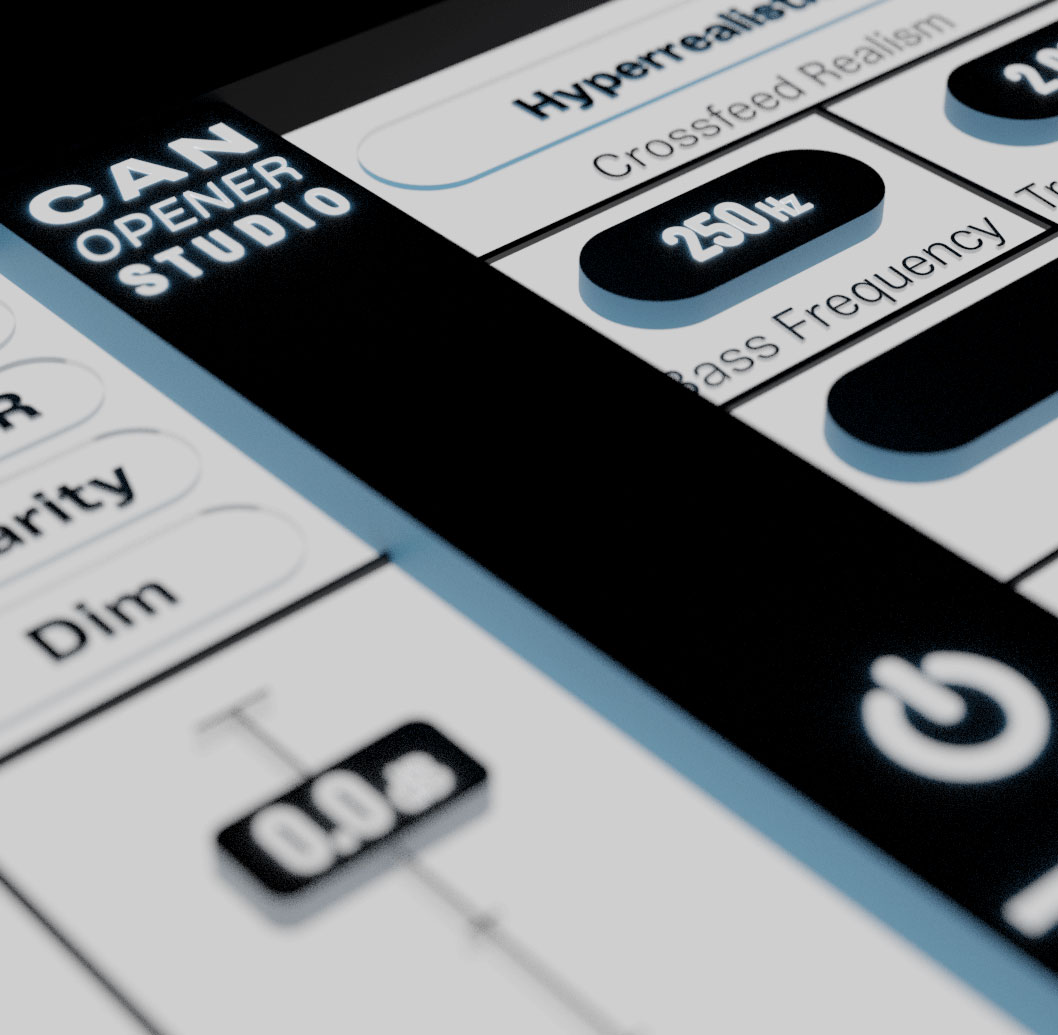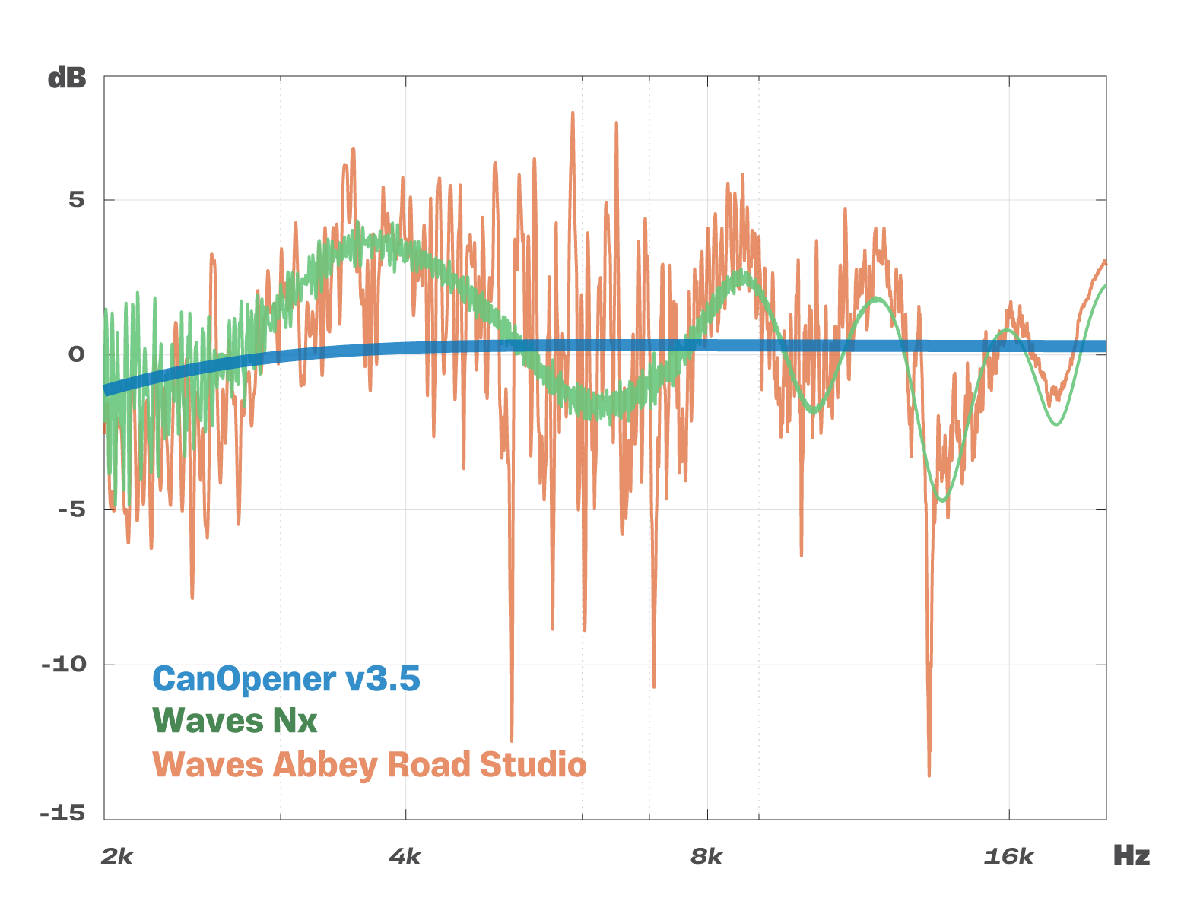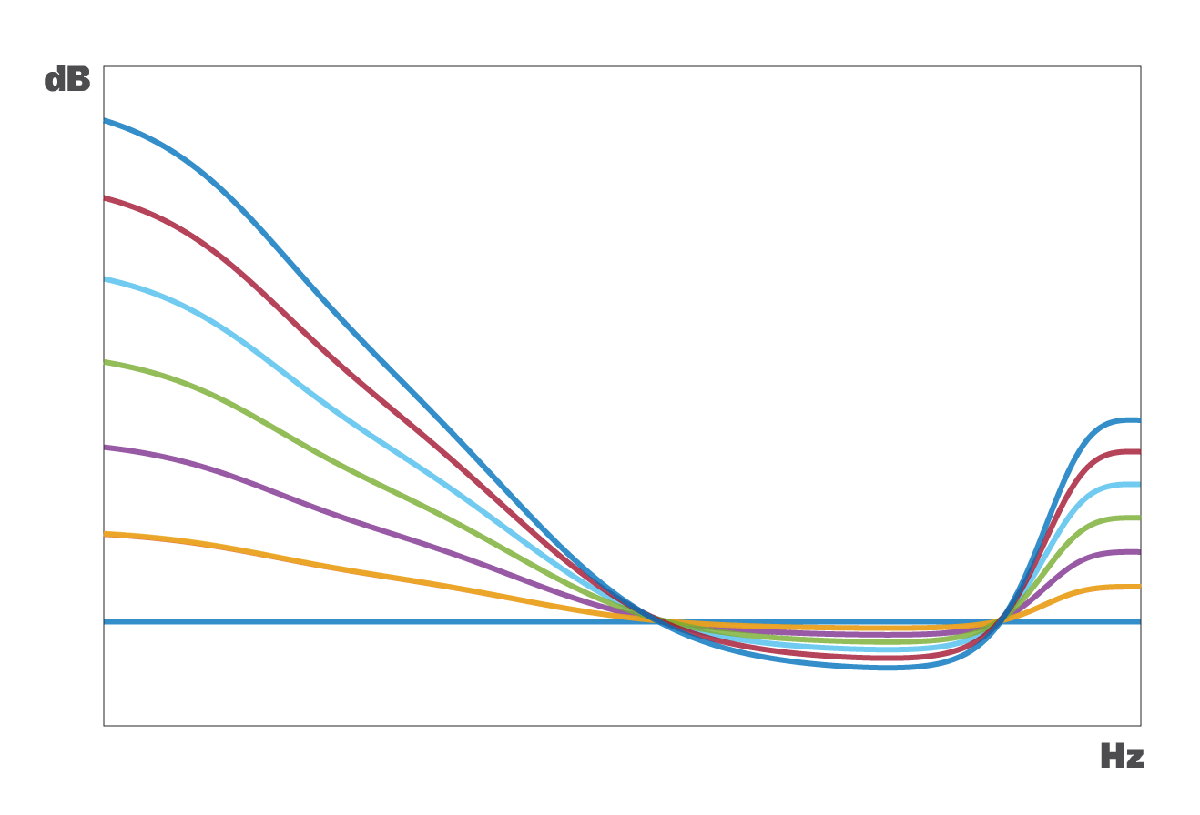CanOpener 3.5 Update

What’s new in CanOpener Studio v3.5? A lot! We’ve improved almost every aspect of CanOpener in this latest release — not only did we make everything sound better, we also made it all easier to use. The new crossfeed options are more transparent, and we’ve added our mastering-grade dither, HQ Mode, Loudness Compensation, and Safe Gain.
TL;DR CanOpener has always been the best way to mix & master on headphones, and with the latest improvements, there are even fewer reasons that you absolutely need speakers to make a high-quality mix setup.
Crossfeed Algorithm Tweaks
For us, the first rule of crossfeed is “do no harm,” and that’s been the guiding principle behind CanOpener from the beginning: to make working on headphones as easy as working on speakers, with as little coloration as possible. It’s why CanOpener is often considered the most natural sounding crossfeed available, and it’s why it sounds so much smoother & flatter than many of the other options out there (see CanOpener Studio vs. Waves Nx).
In v3.5, we’ve improved the overall flatness and loudness-matching a bit in the crossfeed algorithm: CanOpener now produces consistent loudness and frequency response for any crossfeed setting. Crossfeed does naturally enhance bass perception — in fact, that’s one of the main reasons to use crossfeed in the first place — but we’ve improved the algorithms so that mono elements, in particular, will have as little coloration as possible.

Other New Features in v3.5
Loudness Compensation
This new control compensates for the change in equal-loudness contour as the Output Gain is turned down (has no effect at 0.0 dB Output Gain). This makes it easier to work at quieter volumes and make accurate frequency judgments, especially in the bass region. Great for saving your ears when listening for long hours.

Dither (Advanced)
Turns on our mastering-grade dithering algorithm, for use with 24-bit DACs when CanOpener is placed last in the signal chain. The dither is lightly noise-shaped but overall very flat and smooth.
Safe Gain (Advanced)
Safe Gain ensures that CanOpener will avoid clipping regardless of Crossfeed or EQ settings (assuming the input is not already clipping).
HQ Mode (Advanced)
HQ Mode increases the resolution of the EQ as well as the overall signal to noise ratio. If you’ve got the CPU cycles to spare, turn it on!
Some CanOpener Studio FAQs
What CanOpener settings should I use?
Crossfeed 100%, 60º is a great place to start (the Mix Engineer preset). It’s quite lifelike and perceptually matches a real-world set of studio monitors very closely.
150% crossfeed is technically more lifelike (see the Mix Engineer, Lifelike preset), but it can sound overly narrow on some headphones.
If you want the flattest possible frequency response, setting the Crossfeed Angle to 0º will achieve that (see the Mix Engineer, Flat preset). It’s less true-to-life but can be useful in situations where realism is less important.
What order should CanOpener be placed in the processing chain?
Ideally, CanOpener would be placed last in the processing chain on the master channel. If you’re not using CanOpener’s built-in dither, the processing order matters less, but CanOpener should still be near the end. If you are using a headphone EQ correction plugin that uses different profiles for the left & right channel, CanOpener should be placed in front of it.
(N.B. You might be wondering: Why doesn’t the processing order matter that much? The answer: CanOpener is a linear processor — it’s the same reason why 2 + 3 = 5 and 3 + 2 = 5.)
Should I bounce/export my mix with CanOpener “On”?
No. CanOpener is part of your monitoring chain, not your mix. Bypass CanOpener when printing your final mix. If you are looking for a plugin to control the stereo field for creative purposes, vinyl mastering, etc., check our great Midside plugin.
What headphones should I use with CanOpener?
Any pair of headphones can be improved with CanOpener, but open-back headphones are usually the best for replicating the sound of loudspeakers. In general, they’re less fatiguing and sound more natural. Great open options are (updated May, 2021):
- Audeze LCD-1 ($399)
- Sennheiser HD6XX ($220)
- Sennheiser HD600/HD650 ($320)
- Audeze LCD-X ($1,200)
The headphone amp itself is also important, especially if you’re considering going completely headphone-only for monitoring. Though the DAC in your audio interface might be quite good, the onboard headphone amp is often less-than-stellar. Thinking about getting an external headphone amp? Here are a couple of the best options right now (updated May, 2021):
Amp only:
- Benchmark HPA4 ($3,000)
- Monolith THX AAA™ ($400)
- DROP + THX AAA™ 789 ($350)
Amp + DAC/Interface:
- RME ADI-2-Pro FS R BE ($1,999)
- RME ADI-2 DAC FS ($1,299)
- MOTU M2/M4 ($180/$220)
- THX Onyx™ ($199)